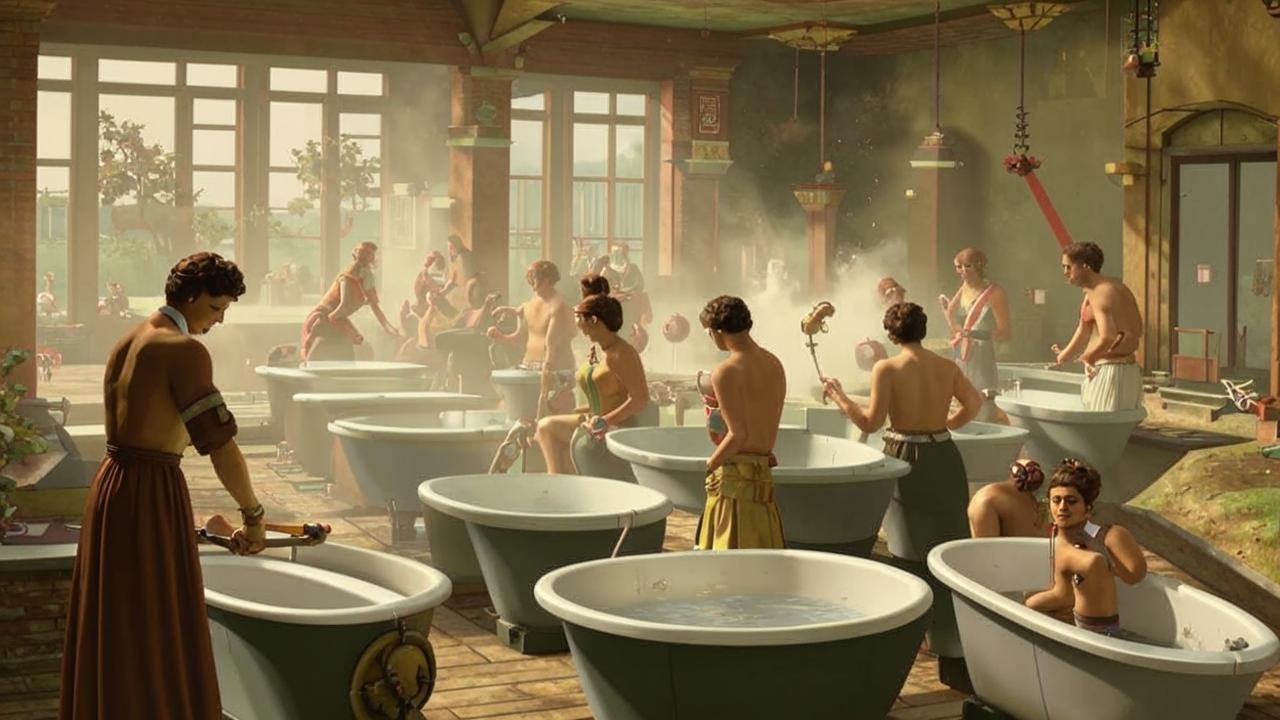France surprises at the European Championship. Instead of a smooth passage through the group stage and the first place – a win plus two draws. As a result: second place in the group and a difficult part of the grid, where there are still, for example, Germany, Spain and Portugal. And to start in the playoffs will have to face another surprising top team – Belgium. Perhaps France – Belgium is the main match on the sign in the 1/8 finals of the tournament. Before the game, which will be held on Monday, July 1, we decided to take a closer look at France – not as a national team, but as a country with its own traditions.
The issue of personal hygiene in the Middle Ages was, to put it mildly, very acute. People even glorified their uncleanliness and passed it off as a good achievement. Healthy and clean teeth were not in fashion: they testified to the low status of a person. A dazzling smile meant that a person had a poor diet and could not afford sweets.
Curiously, it is France in the history of the Middle Ages belongs to the first place in Europe in the presence of many strange traditions, for which the modern generation of the country would be very ashamed. This state with the richest culture was considered, unfortunately, on the continent the most dirty and unkept. And at the same time, the French overtook everyone in the number of open Russian baths.
Hygiene in the Middle Ages
Many nobles who had huge fortunes frankly admitted that they did not spend time on care and care of their bodies at all. Women preferred to bring beauty in other ways. It turns out that even the Queen of Spain Isabella of Castile did not bother with water procedures. According to contemporaries, she bathed only twice in her life: at birth and on the eve of her wedding. General slovenliness and dirt gave rise to a lot of dangerous diseases. For this reason, at the height of epidemics, death swept entire cities.
Remarkably, baths were quite popular in the Middle Ages. True, they were rarely used for their intended purpose. It was believed that water opens the pores of the human body, so that any infection could easily get into it. And even the high mortality rate due to excessive pollution could not challenge the myth inspired by the church.
Most often superstitious and gullible residents washed only the mouth and hands. By the way, the face itself was not touched. The church persistently told all parishioners that water can make a person blind. However, occasionally a bath was still taken. But it happened strictly for medical reasons.

How did Russian baths appear?
By the way, the ancient Russian baths on its basic principle of work differed little from modern ones. Our ancestors adored hot steam and did not spare water, washing away sweat and dirt after a hard day. Therefore, we can safely say that medieval Russia was one of the cleanest countries compared to the whole of Europe.
According to some historians, baths in Russia first appeared in the Slavic tribes. It looked as follows: it was a wooden hut with a small window under the ceiling. Inside there was a vat with water and a small pile of stones in the corner. To keep the steam out of the bathhouse, the door was firmly closed. It was a real steam room. And, agree, in structure and purpose they differ little from modern baths, which are now built on land plots.

How did they begin to build baths in medieval France and why did not bathe in them?
By the beginning of 1300 France became a real record-breaker in the number of baths – there were 29 of them. This number may seem ridiculous now, but at that time it was a kind of record. The baths were open all days except Sunday. Already at dawn, the bathhouse attendants would shout loudly to let the baths know that they were open. By the way, there visitors were offered the whole range of services, including hairdressing.
Despite the fact that they could be visited free of charge and almost at any time, people did not appreciate the baths and rarely appeared there. And all the matter is that again the church interfered. The clergy forbade washing, believing that the main thing in a person is the purity of the soul and thoughts, and not the body.
Alas, Russian baths remained idle, with only rare visitors. To somehow get rid of the constant odor of unwashed bodies, nobles put scraps of cloth, generously soaked them in perfume, in their pockets. But this was of little help against the heavy ambergris. Then special bags with fragrant herbs came to replace them, which were hidden in the folds of dresses or in the pockets of shirts.

Historians know the case when the Spanish ambassador, who arrived for an audience with the French king, almost fainted. In the chambers of the European ruler was disgusting odor, which seemed to soak through and the owner of the palace. Claiming to be dizzy, the pale Spaniard asked the king to hold the meeting in the garden.
Washing the linens was also out of favor. Changing sheets and pillowcases was a foreign and harmful activity. This necessary and useful procedure was avoided by both rich noblemen and poor people. According to the opinion imposed by churchmen, it was believed that water was a satanic evil that should be avoided by all means. The servants of the cult frightened ignorant people as they could. For example, they assured their flock that bathing washes away the sanctity of baptism.
A new way of looking at hygiene
Fortunately, over time, the French overcame their fear of superstition. They began to modify the baths and added an oriental touch. They added aromatic oils to the baths, which not only fought unpleasant odors, but also had a calming effect.
By the way, even nowadays, baths with oriental flavor are more popular in the country. The most famous historical baths are located in Tivoli and are still in operation today. According to the ancient tradition, visitors are first offered a hot herbal bath, then warming up the body on hot stones, and then the steam room. And finally, the famous bath with aromatic oils, which can be chosen to suit your taste.






